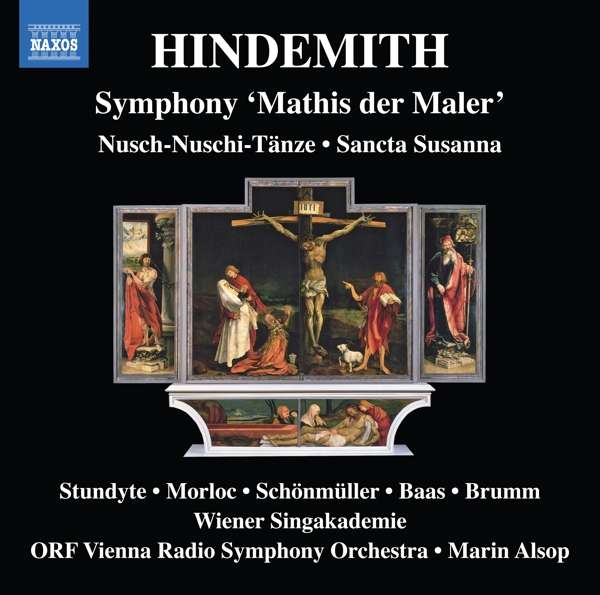Nach dem Ersten Weltkrieg wandte sich Paul Hindemith deutlich von den großen Emotionen der Postromantik ab und schuf eine Art Neue Sachlichkeit in seiner Musik. Drei Operneinakter begründen diesen neuen Stil, darunter sofort ein Meisterwerk. Sancta Susanna, 1921 komponiert, thematisiert, wie auch die zwei anderen Opern (Mörder, Hoffnung der Frauen und Nusch-Nuschi) die Sexualität auf eine provokante Weise. Kein Wunder also, dass die Nazis dies als Entartete Musik bezeichneten. Dieser Einakter wird auf dieser CD von einer Orchestersuite, den Nusch-Nuschi-Tänzen aus der gleichnamigen Oper von 1920 sowie der bekannten Symphonie Mathis der Maler umrahmt. Die Veröffentlichung ist umso wertvoller, da sie z.T. selten aufgenommenes Material enthält und dieses in hervorragenden Interpretationen anbietet. Marin Alsop dirigiert das ORF Radio Symphonieorchester Wien, das die drei Partituren klangschön und kraftvoll interpretiert und nur in den kammermusikalischen Teilen zeigt, dass die Wiener Philharmoniker resp. Symphoniker die besseren Orchester sind. Hier fehlt es manchmal an Feinheit. Alsop selbst scheint die Wogen der Musik etwas glätten zu wollen, so dass die Neue Sachlichkeit über der klanglichen Dramatik und dem expressiven Element steht. Doch kühl und distanziert wird hier nicht musiziert. Im Gegenteil, die drei Werke erklingen dermaßen spannend und mitreißend, dass das Hören zu einem wahren Vergnügen wird, zumal sich auch die Aufnahmetechnik in den Dienst der Musik stellt. Die beiden Hauptrollen in Sancta Susanna sind mit Ausryne Stundyte und Renée Morloc glänzend besetzt.
After World War I, Paul Hindemith clearly turned away from the great emotions of post-Romanticism and created a kind of New Objectivity in his music. Three one-act operas established this new style, including immediately a masterpiece. Sancta Susanna, composed in 1921, like the two other operas (Murderer, Hope of Women and Nusch-Nuschi), addresses sexuality in a provocative way. No wonder, then, that the Nazis labeled this as Degenerate Music. This one-act opera is framed on this CD by an orchestral suite, the Nusch-Nuschi Dances from the 1920 opera of the same name, and the well-known symphony Mathis der Maler. The release is all the more valuable because it contains some rarely recorded material and offers it in excellent interpretations. Marin Alsop conducts the ORF Radio Symphony Orchestra Vienna, which interprets the three scores beautifully and powerfully, showing only in the chamber music sections that the Vienna Philharmonic or the Vienna Symphony Orchestra is the better orchestras. Here there is sometimes a lack of subtlety. Alsop herself seems to smooth the waves of the music somewhat, so that New Objectivity prevails over tonal drama and the expressive element. But there is no cool and detached music-making either. On the contrary, the three works sound so exciting and rousing that listening to them becomes a real pleasure, especially since the recording technique is clearly serving the music. The two leading roles in Sancta Susanna are brilliantly cast with Ausryne Stundyte and Renée Morloc.


















